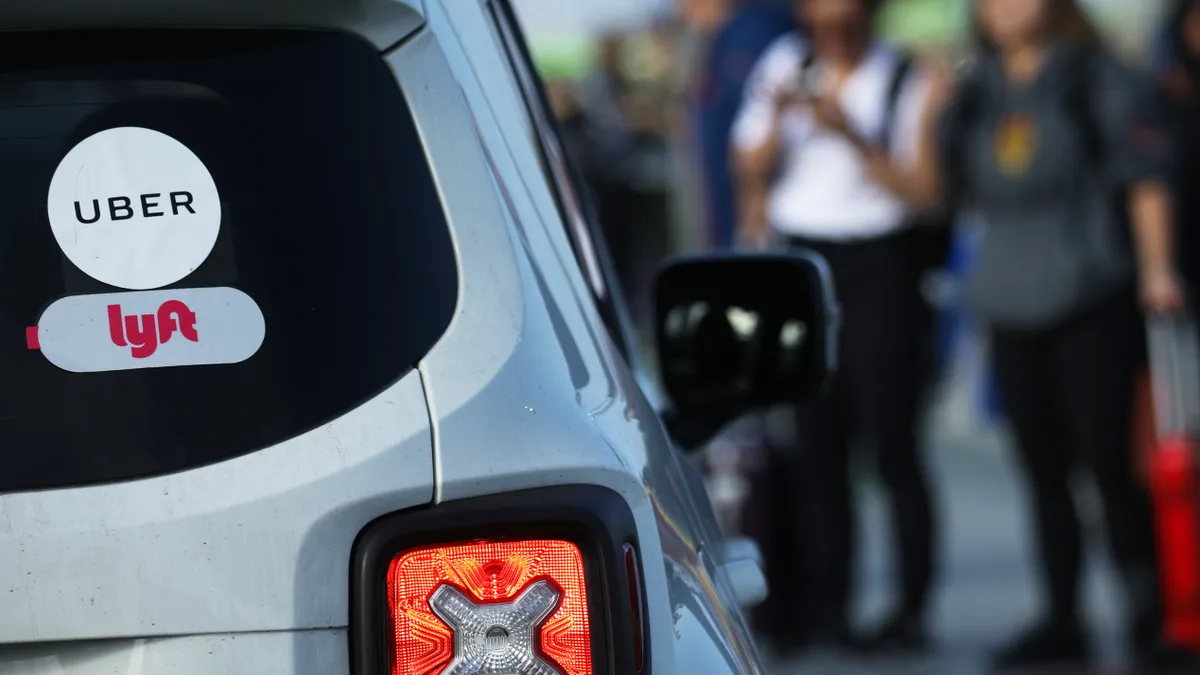Dive Brief:
- Uber and Lyft both reported strong revenue growth in 2021, but they differ in ridership recovery from pandemic lows. While battling it out for the core ride-sharing market, they are pursuing different strategies for delivery and self-driving vehicles.
- Food and other delivery bookings for Uber in the fourth quarter grew 33% year over year as "Uber Eats became the fastest-growing delivery player in America," said CEO Dara Khosrowshahi in Uber's quarterly earnings call. Lyft, instead, is focused on business-to-business delivery, the company said on its earnings call.
- Lyft is now the largest e-bike operator in North America. John Zimmer, the company's president and co-founder, said on its earnings call that the number of rides on its bikes hit an all-time high in the third quarter of 2021, adding that "CitiBike in New York is the 25th most-ridden transit network in the United States."
Dive Insight:
The two transportation network companies experienced steep declines in ridership and a loss of drivers as the pandemic took hold in 2020, but they each saw improvement in 2021. "Our results continue to demonstrate both how eager people are to move around their cities as restrictions ease up and how delivery has become an important part of their daily lives," Khosrowshahi said on the call.
Uber's revenue grew 57% in 2021, while Lyft saw a 36% increase. The total number of trips, including ride-sharing and delivery, grew 27% for Uber worldwide. Lyft did not provide a comparable figure.
Drivers are also returning to both companies, relieving a pandemic-induced shortage. Lyft reported that the total number of active drivers in the fourth quarter of 2021 was up 34% from the same period in 2020. Uber said its global driver base stood at 4.4 million people, the largest it’s been since the second quarter of 2020. Elaine Paul, Lyft's chief financial officer, attributed that company's driver return partially to the expiration of extended unemployment benefits and the child care tax credit.
For Lyft, micromobility was a bright spot last year. "Consider that in each quarter of 2021, the number of riders using our bikes and scooters in addition to ride-share consistently grew faster than ride-share-only riders," said Zimmer.
Although the two companies once saw promise in autonomous vehicles (AVs), Uber sold its self-driving unit to Aurora in 2020, and Lyft divested its self-driving division to Woven Planet, a subsidiary of Toyota, last year.
Lyft hasn't given up on self-driving vehicles, however. Last year, it entered into an agreement with Ford and AV technology platform company Argo AI to put autonomous ride-sharing vehicles on the road in Miami with plans to expand to Austin, Texas, this year. "Ultimately, we expect this partnership to scale to 1,000 vehicles across multiple markets by 2026," Zimmer said on the call.
Paul described Lyft's outlook for 2022 as "cautiously optimistic," expecting that demand for its services will increase as the omicron wave of COVID-19 infections subsides.
Uber's chief financial officer, Nelson Chai, said on the call that he expects gross bookings to grow between 28% and 33% in the first quarter of 2022 compared with that period in 2021.
Research firm The Insight Partners projects the global ride-sharing market to grow at a compounded annual rate of 10.6% from 2021 to 2028.












